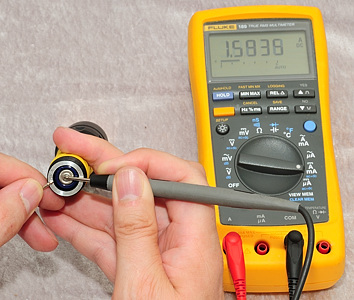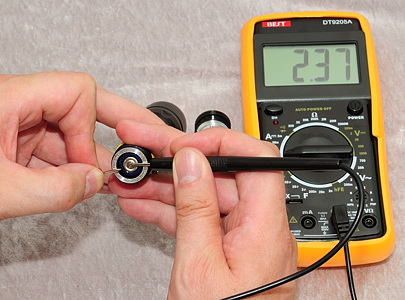3 ½ digit ( maximum display 1999 )
Accuracy DC voltage +/- 0,5% of rgd +/- 1 digit
Is the DMM accurate enough for measuring flashlight batteries , or will you recomend me buying a better one.
For LiIon batteries the charge voltage is usual 4.2 volt +/- 0.05 volt, as long as you batteries does not read above 4.2 volt on you DMM they are below 4.25 volt (According to the DMM specification below 4.23 volt).
Most chargers will be more than good enough and you do not need to check the batteries each time you take them off the charger.
Where it is important to check batteries is when you run them down, many LiIon batteries can get dangerous if you discharge them to low, to check this does not require much precision from the meter. If the battery measures below 2.5 to 3 volt (After they have rested some time), there is a risk they may explode when charged. This is a cumulative effect, each time they get discharged to much the risk for explosion during any subsequent charge will increase slightly.
Batteries that show 0 volt on the meter might not be discharged to much, it is probably the protection that is tripped. If you charger can reset a protection (See my
charger reviews), give the cell a second in the charger, then take it out and check the voltage again. If the charger cannot reset protection you need to wire it parallel with another LiIon cell for a second.
And if you DMM's reading suddenly are a bit beside the expected values, you probably need to replace the battery in the meter.



